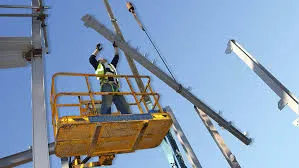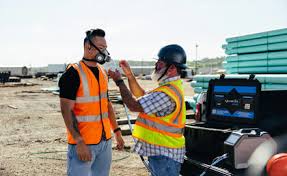
WASHINGTON — OSHA’s proposed rule to narrow the reach of its General Duties Clause could have ripple effects beyond theme parks and sports arenas — potentially reshaping how construction firms are held accountable for certain workplace hazards.

On July 1, OSHA announced it wants to limit its use of the General Duties Clause for hazards “inherent and inseparable from the core nature of a profession activity or performance.” Under the Occupational Safety and Health Act of 1970, the clause requires employers to keep workplaces free of known dangers that could cause death or serious harm, especially when no specific standard exists.
“[The General Duties Clause] was never intended to be a default regulatory device by the government,” said Phillip Russell, a Tampa-based OSHA and employment lawyer with Ogletree Deakins. “In regulating an entire industry, Congress needs to be more specific in its delegation of authority.”
The proposed change specifically targets athletic and entertainment occupations, but OSHA is asking stakeholders whether other industries should be added — potentially opening the door for broader applications.
Russell believes the rule could have significant consequences for construction, where the General Duties Clause often fills gaps, like when a worker is injured by extreme heat — an area without a dedicated federal standard — or when an external hazard, such as a speeding car, enters a work zone.

The push to narrow the clause’s reach stems from a high-profile legal battle: SeaWorld of Florida, LLC v. Perez (2014). In that case, the D.C. Circuit upheld OSHA’s citation against SeaWorld for exposing trainers to orcas after a fatal attack. The lone dissent came from then-judge, now Supreme Court Justice Brett Kavanaugh, who argued Congress didn’t intend OSHA to regulate obvious risks in inherently dangerous professions, like whale shows or Nascar races.
Although OSHA won the SeaWorld case at the time, the agency now appears to agree with Kavanaugh’s dissent. “Basically, the General Duties Clause is used too broadly according to this rule change,” Russell said.
While the change is intended to clarify limits on enforcement in sports and entertainment, labor groups and safety advocates are already debating how it might weaken protections in industries where new hazards emerge faster than OSHA can create detailed rules.
In construction, industry lawyers say the clause has been an important fallback for issues like extreme heat, which has become a growing risk as climate change fuels longer and hotter summers. The absence of a federal heat standard means the General Duties Clause is often used to issue citations when workers fall ill or die.
“This signals OSHA’s willingness to limit its own reach in areas where Congress hasn’t kept up,” said a construction safety consultant familiar with recent cases. “Contractors may see fewer citations for risks that are real but hard to fully control.”
OSHA is accepting public comments on the proposed rule through late August. Industry groups, unions and safety experts are expected to weigh in on whether the construction industry — where unpredictable hazards are common — should remain fully covered by the clause’s broad protections.
Employers and contractors should monitor the rule’s progress closely, legal experts say, since any final change could redefine where OSHA draws the line between unavoidable job risks and hazards that demand abatement.
Originally reported by Zachary Phillips in Construction Dive.